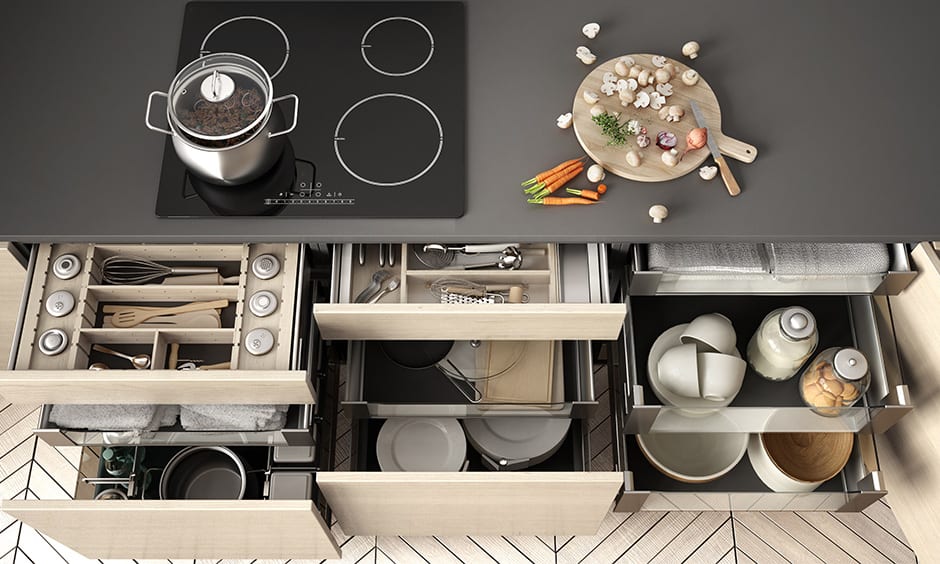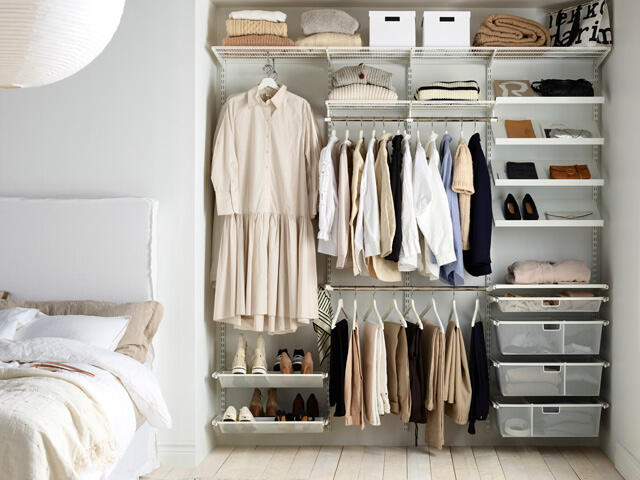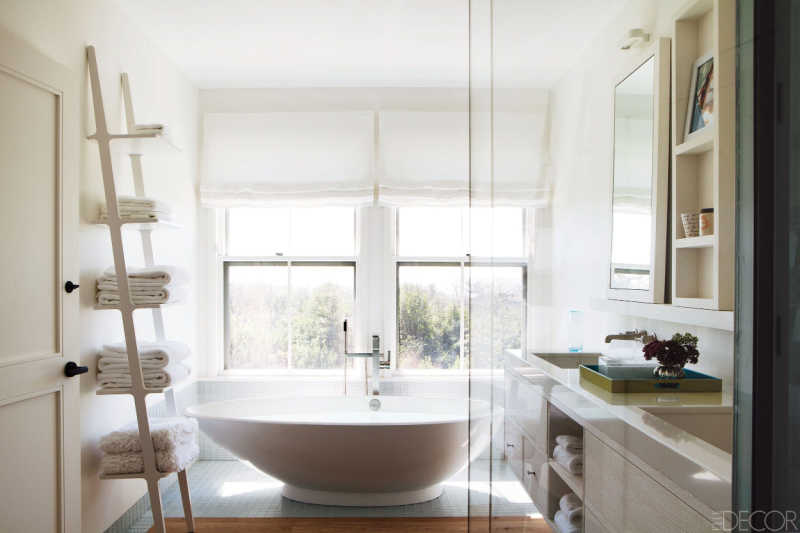
Spring cleaning can transform a home when approached methodically and with preparation. The following essentials guide the process: assembling necessary supplies, organising a clear cleaning schedule, and adopting effective techniques.
#1 – Gathering Cleaning Supplies
Having the right supplies makes the home cleaning process more efficient. Gather multi-surface cleaners, microfibre cloths, a mop, a vacuum cleaner, and dusting tools. Consider eco-friendly options, such as natural cleaners, to reduce environmental impact. For organisation, use a bucket or caddy to keep cleaning solutions and tools portable and accessible.
Include protective gear, like gloves and masks, especially when using strong cleaners. Ensure each room’s specific needs are covered: kitchen degreasers, bathroom disinfectants, and glass cleaners for windows. This preparation ensures every surface is addressed without interruptions.
#2 – Creating a Schedule and Checklist
Creating a thoughtful schedule ensures every task gets accomplished efficiently. Prioritise rooms based on usage and mess levels, perhaps starting with the kitchen and bathrooms, which often require more scrubbing. Use a checklist to break tasks into daily or weekly goals. A digital calendar or dedicated app can help track progress and send reminders.
List tasks for each room, such as dusting, vacuuming, mopping, and decluttering, then allocate time for each. Assign tasks among household members to share the workload. This organisation prevents overwhelm and ensures a smooth, timely cleaning process.
#3 – Efficient Cleaning Techniques
Efficient cleaning involves using the right techniques to save time and effort. Start by decluttering each room to make it easier to clean surfaces. Work from top to bottom, beginning with dusting ceiling fans and light fixtures before tackling furniture and floors. This approach prevents dirt from resettling on cleaned areas.
Use s-shaped motions with cloths or mops to avoid streaks, and let cleaning solutions sit on stubborn stains for a few minutes before wiping. Employ the two-bucket method when mopping: one with clean water and one with soapy water. This technique reduces dirt transfer and leaves surfaces spotless.

Living Room Refresh
Refreshing the living room involves thorough cleaning, from surfaces to upholstery, along with decluttering and reorganising the space for better efficiency. This checklist provides a structured approach to revitalising this area.
#1 – Dusting and Wiping Surfaces
Dust accumulates quickly in living rooms, affecting air quality and appearance. Begin by using a microfibre cloth to gently remove dust from surfaces like shelves, tables, and electronics. Be sure to clean under items and in corners where dust is likely to gather.
Use a safe cleaner for wood or glass, depending on the surface type. Spray the cleaner onto the cloth rather than directly on surfaces to prevent damage. Don’t forget to wipe down remote controls or light switches, often overlooked but frequently touched.
#2 – Upholstery and Carpet Care
Regular maintenance of upholstery and carpets extends their lifespan. Vacuum fabric surfaces to remove loose debris and crumbs, using attachments for crevices. If cushions have removable covers, consider washing them according to care instructions.
For stains, use a mild detergent or a specialised cleaning product suitable for the material. Spot-test any cleaner in an inconspicuous area first. Carpet cleaning can involve either vacuuming or using a steam cleaner for a deeper cleanse.
#3 – Decluttering and Organising
Begin decluttering by assessing all items in the living room, deciding what to keep, donate, or dispose of. Focus on reducing paper clutter and returning misplaced items to their proper location.
Consider storage solutions that suit your needs, such as baskets for blankets or trays for remote controls. Organising shelves with a blend of decorative and functional items can enhance the space’s look and feel. Regularly revisiting this process keeps clutter at bay.

Kitchen Deep Clean
A deep clean of the kitchen involves focusing on maintaining appliances, organising cupboards, and thoroughly sanitising surfaces and sinks. Regular care and cleaning maximise efficiency and prolong appliance lifespan.
#1 – Appliance Maintenance
Proper maintenance of kitchen appliances is essential to ensure they function efficiently. It’s important to unplug appliances before cleaning to prevent any hazards.
Refrigerators should be emptied and the interior thoroughly wiped down with a solution of mild detergent and warm water. Coils at the back should be dusted to improve energy efficiency. Ovens and microwaves require attention, too. Remove racks and trays, using specialised oven cleaners for burnt-on grime. Microwaves can be cleaned with a mixture of vinegar and water; heating this solution can loosen stubborn stains.
Dishwashers benefit from the removal of debris from filters and a vinegar cycle to eliminate odours. Maintaining documentation for each appliance ensures owners are aware of any specific requirements or recommended maintenance schedules.
#2 – Cupboard Organisation
An organised cupboard simplifies meal preparation and reduces food waste. Begin by emptying cupboards completely and checking the expiry dates of items, disposing of anything that’s out-of-date. Wipe down the interior surfaces with a damp cloth.
For effective organisation, it’s beneficial to group similar items together. Use containers and labels to store dry goods such as pasta, rice, and cereals. Consider using shelf risers and lazy Susans for easy access to spices and jars.
Reducing clutter aids visibility, making it easier to locate items and plan meals. When replacing items on shelves, put frequently used items at eye level. Align handles of pots and pans for safer storage and easier retrieval.
#3 – Surface and Sink Sanitation
Kitchen surfaces and sinks must be sanitised regularly to prevent bacterial build-up. Begin by clearing surfaces of any utensils and small appliances, which should be wiped separately.
Use an anti-bacterial spray or a solution of vinegar and water for countertops, paying special attention to seams and edges. For stainless steel sinks, a paste of baking soda and water can be used to scrub gently, followed by a vinegar rinse. Don’t forget to clean behind the taps and remove limescale with lemon juice.
Wiping down areas around the cooker and splashback zones regularly can prevent the accumulation of grease, ensuring a hygienic and pleasant workspace. Keeping surfaces dry further helps discourage bacterial growth.

Bedroom Revitalisation
Revitalising a bedroom involves attention to bed linens, mattress care, wardrobe organisation, and dust removal. These activities help ensure a fresh and tidy space, enhancing comfort and relaxation.
#1 – Bed Linens and Mattress Care
Regularly washing bed linens is crucial for maintaining cleanliness. It is recommended that bed sheets and pillowcases be laundered weekly in hot water to eliminate dust mites and allergens. Consider rotating duvet covers monthly. Mattress care involves vacuuming the surface and sides to remove dust, and using a mild cleanser for any stains. Rotating the mattress every three months can prevent uneven wear, while a mattress protector offers additional cleanliness.
#2 – Wardrobe Management
Efficient wardrobe management begins with decluttering. Assess each item of clothing for necessity and wearability, donating those no longer needed. Group remaining clothes by type or season for easy access. Use uniform hangers to save space and maintain a tidy appearance. Incorporate drawer organisers or storage boxes for smaller items like socks and accessories. A biannual wardrobe audit ensures seasonally appropriate clothing is always on hand.
#3 – Dust Removal and Airing Out
Dusting involves wiping down all surfaces, including shelves, furniture, and neglected areas like skirting boards. Microfibre cloths or dusters trap particles effectively. Curtains, blinds, and soft furnishings should also be cleaned regularly to reduce dust accumulation. Ensuring good air circulation in the bedroom is critical. Open windows often to allow fresh air in, and use air purifiers or houseplants to enhance air quality.
Bathroom Sanitation
Effective bathroom sanitisation requires meticulous attention to grout and tile cleaning, thorough disinfection of fixtures, and diligent laundering of towels and mats. Each task is essential to maintaining hygiene and ensuring a clean environment.
#1 – Grout and Tile Cleaning
Grout and tiles can accumulate dirt and mildew. Regular cleaning prevents these issues. Use a mixture of baking soda and vinegar for a thorough clean. Apply the paste to grout lines and tiles, scrub with a stiff-bristled brush, and rinse with warm water.
For stubborn stains, consider a commercial grout cleaner. Always follow the manufacturer’s instructions. After cleaning, drying is crucial to avoid moisture retention, which can lead to mould growth. Use a fan or open windows to ensure proper ventilation.
#2 – Fixture Disinfection
Bathroom fixtures, including taps, showerheads, and toilet handles, are hotspots for germs. To disinfect, use a solution of bleach and water, applying it with a cloth or sponge. Pay attention to frequently touched areas. Rinse with clean water and dry with a clean towel.
An alternative is antibacterial wipes for quick daily maintenance. Ensure all surfaces are dry to prevent water spots and encourage hygiene. Regular attention to these areas significantly reduces the risk of germ transmission and keeps the bathroom cleaner.
#3 – Towel and Mat Laundering
Towels and mats require regular laundering. Wash them weekly in hot water to kill bacteria. Use a mild detergent and avoid fabric softeners, which reduce absorbency. Adding vinegar to the rinse cycle can help remove odours.
Dry towels and mats thoroughly, preferably in the sun, to prevent mildew. It’s recommended to rotate towels and mats, ensuring they remain fresh. Consider purchasing extra sets for rotation. Regular laundering extends their lifespan and maintains a hygienic bathroom environment.


No Comments